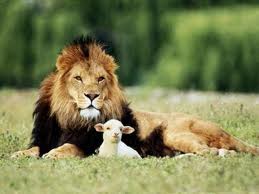Matthew 14:1-12
This chapter explains the reason John the Baptist was murdered, and effects. It also contains a series of miracles by the Lord Jesus. The many mentions of Herod in the Gospels and Acts can be confusing. The following from Wikipedia, and Dake’s notes may help clear up any confusion. “The Herodian Dynasty was a Judean dynasty of Idumaean/Edomite descent. The Herodian dynasty began with Herod the Great, who assumed the throne of Judea, with Roman support, bringing down the century long Hasmonean Kingdom. His kingdom lasted until his death in 4 BCE, when it was divided between his sons as a Tetrarchy, which lasted for about 10 years. Most of those kingdoms, including Judea proper, were incorporated into Judaea Province in 6 CE, though limited Herodian kingship continued in Northern Levant until 92, when the last Herodian monarch, Agrippa II, died and Rome assumed full power over his domain.” Wikipedia.
Dakes says, “Herod the Great, son of Antipater (an Idumean) and Cypros (an Arabian woman). Antipater was made Procurator of Judea by Julius Caesar in 47 B.C. Herod was made governor of Galilee when he was 25 years old and was made king of Judea in 37 B.C. He rebuilt the Jewish temple (Jn. 2:20). At his death in 4 B.C. his kingdom was divided. His son Herod Antipas reigned over Galilee and Perea from 4 B.C. to A.D. 39 (Lk. 3:1-2). He killed John the Baptist (Mt. 14:1). Another son, Archelius, was made ruler of Judea and Samaria (Mt. 2:22). He is called “Philip” in Mt. 14:3. Philip was succeeded by Herod Agrippa I in A.D. 37. In A.D. 40 he took over all the original territory of Herod the Great. He is mentioned in Acts 12. He was succeeded by Herod Agrippa II (Acts 25:13; 26:32). Dake’s Annotated Reference Bible.
Herod the King was the one who had the boy babies from two years and under murdered in hopes of killing baby Jesus. In our text, his son had John the Baptist killed. At the death of Herod the Great, his kingdom was divided among his sons. The word, “tetrarch” means a forth part. He was the governor of the fourth part of a region;” hence, “a dependent princeling,” or “any petty ruler” subordinate to kings.
When he heard of the works of Jesus, his guilty conscience, and stupid superstition led him to believe that John the Baptist was raised from the dead. John had rebuked Herod’s brother, Phillip, for marring his niece. Scripture forbade this marriage. (Lev. 18:6,16; 20:21).
When Herod’s birthday was kept, the daughter of Herodias danced before them, and pleased Herod. He was so pleased, that he promised her he would give her anything she ask for. Thus, we don’t need much imagination to understand the nature of her dance. She told her mother of the promise, and her wicked mother ask for the head of John the Baptist on a plate. She ask, and Herod, bound by his oath, fulfilled her request.
Josephus says, “[Herodias] This infamous woman was both niece and wife to Philip and Herod, being the daughter of Aristobulus, son of Herod the Great. She first married Philip, her uncle, by whom she had Salome. Later she left him to live publicly with her brother-in-law, who had been married before to the daughter of Aretas, king of Arabia Petra. Aretas made war on him and destroyed Herod’s army, which Josephus says was judgment on him for murdering John the Baptist (Antiquities, 18.5.2).”
John’s disciples came to claim the body, and buried it. I believe the following text applies to John. “9 As unknown, and yet well known; as dying, and, behold, we live; as chastened, and not killed; 10 As sorrowful, yet alway rejoicing; as poor, yet making many rich; as having nothing, and yet possessing all things.” 2 Corinthians 6:9-10.
Pastor Ken Blue was born in Boswell, Ark. In 1955 he accepted Christ as his Savior. He and his wife Joyce were married in 1955. They have 5 children. He graduated from Midwestern Baptist Bible College in 1969 and started the Open Door Baptist Church in Lynnwood, Wa. where he pastored for 39 years. Because of health issues (ALS) he was forced to resign as pastor. It is his desire to continue to be used of God to help pastors and believers through this ministry.

